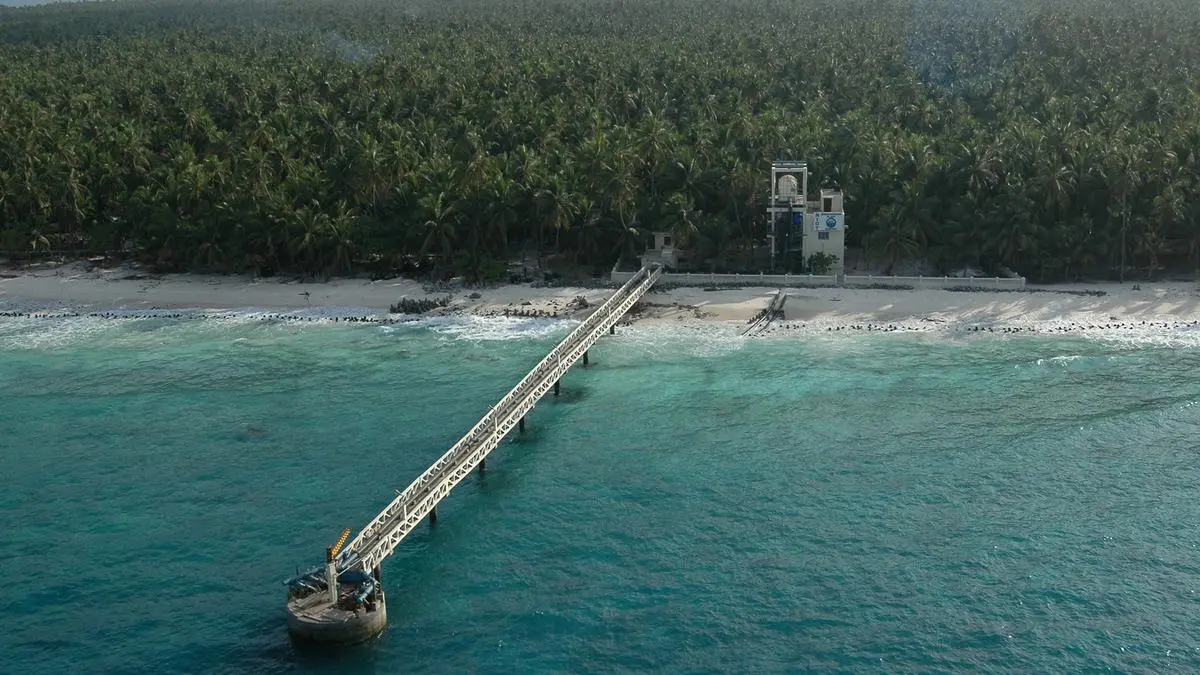By Team
Copyright thehindubusinessline

Scientists at the Indian Institute of Science (IISc), Bengaluru, have developed an improved technology for sea water desalination, using a “siphon-based water delivery system”.
You can put sea water in large tanks and let the Sun do its job of evaporation. Then you can collect the vapours and condense them into drinking water. But this is not quite the way to do it, because this method is extremely inefficient.
Sunlight ends up heating large volumes of water, with only the top surface evaporating, resulting in low water output. To improve this, many systems use hydrophilic wicks: these pull up a thin film of water to the surface, so only that layer is heated. This “thermal localisation” makes evaporation faster and more energy efficient.
But this ‘wick method’ also has its own problems. First, scaling up is difficult. Capillary action in wicks can only lift water to a limited height (about 10–15 cm), so the surface area of the evaporator — and therefore the total water produced — remains small. Second, salt build-up reduces performance. As salt water evaporates, crystals form on the evaporator surface, clogging it and lowering efficiency over time.
Existing methods to get rid of salt, like backflow or diffusion, are often too slow and ineffective for larger systems.
Gravitational force
To solve this, researchers at the Department of Mechanical Engineering, IISc – Nabajit Deka, Meeran Mehmood Qari and Susmita Dash – have proposed a siphon-based water delivery system. Instead of depending on capillary rise, the system uses gravity to draw water from a higher level to a lower one. This eliminates the size limitations of wicks and also helps flush away salt deposits.
The design combines an insulating wick fabric with a grooved metal surface. The grooves spread water evenly across the evaporator, ensuring uniform heating and efficient evaporation. A specially designed grooved condenser keeps fresh water and brine separate, even with a tiny 2 mm air gap. This small gap is important because it reduces resistance to vapour flow, making the system more efficient.
Recycling heat
Another innovation is the ability to recycle heat. In a multi-stage setup, the heat released when vapor condenses is reused to power the next stage. This dramatically improves the gained output ratio (GOR), meaning more fresh water is produced for the same amount of sunlight.
Experiments with a solar simulator (equivalent to standard 1-sun illumination at 1,000 W/m²) showed excellent results. A 10-stage system with just a 15 cm × 15 cm footprint produced 5.73 liters per square meter per hour from sea water (3.5 per cent salt content).
Expanding to 15 stages increased productivity to a record 6.23 liters per square metre per hour, with a thermal-to-water efficiency of about 423 per cent, thanks to the heat recycling. Importantly, when the evaporator area was scaled up by four times, the system still maintained high performance — demonstrating real scalability.
In short, this siphon-based, multi-stage design addresses the two biggest bottlenecks in passive solar desalination: salt accumulation and scalability. By making the system both durable and expandable, it brings us closer to low-cost, environmentally friendly desalination technologies that could provide clean water for millions in energy-poor regions.
Published on October 6, 2025